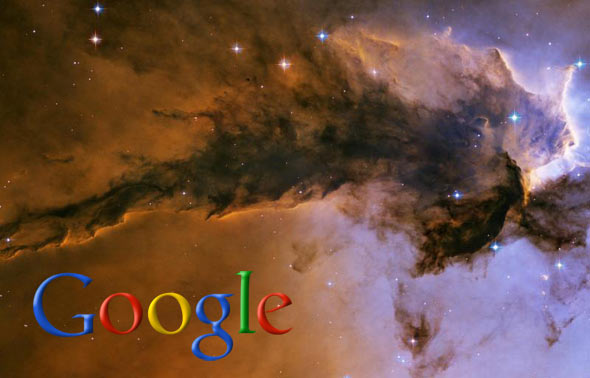Google Sky allows its consumers to sight a broad array of images from advanced sources such as the Hubble Telescope, NASA satellites, and the Sloan Digital Sky Survey. But from now on the services will provide a means for users to observe community-created images, and to view events just as they are taking place like the eclipse.

Google made an announcement on Friday according to which it is striking a partnership with Slooh. Slooh is a robotic telescope service that can be viewed live through a web browser with Flash plug-in, it is an online astronomy platform with live-views and telescope rental for a fee and a diverse and constantly growing collection of telescopic viewing and photography “missions.” It is located in New York.
One of the conditions of the joint venture is that Slooh will make available information that will let everyone using Google Sky to inspect the new level of map showing thousands of photographs of the unfathomable space taken by the users, and also view images from observatories of eclipses and added celestial activities of great importance.
Noel Gorelick, the technology lead for Sky in Google Earthsaid that at present what Google is missing are imageries from people taken recently or in the spur of the moment but Slooh now will provide all that. He said that there’s a entire group of devotees on Slooh who chase comets and take images, which we find very attractive.
Slooh was founded in 2003 and now consists of 50,000 members, some pay and some get the premium access for free. 1.4 million Photographs of the sky have been taken by its members in Chile, Australia, and the Canary Islands with the aid of telescopes. Slooh has a list of forthcoming missions on its site, and the next missions include sighting of Globular Cluster M2, Globular Cluster M15, the Triangulum Galaxy (M33), and the Coccon Nebula (IC 5146). Anyone and everyone can be a part of these missions, and the people using the service for free can only access the first four photos they take, while those who pay get limitless access.
Members who pay have added perks; they can hold time to place one of the telescopes to view a spot that catches their eye either from a pre-selected list of targets, or by choosing from astronomy catalogs, or by entering coordinates that they desire to focus on. Several of the assignments are escorted by audio recitation from experts, most notably Bob Berman of Astronomy magazine.
According to Patrick Paolucci, Slooh’s executive vice president for sales and marketing, “Slooh” is an abbreviation of the phrase to “slew a telescope,” signifying to manage, or modify, its course.
Paolucci made clear that Slooh has both children and adults as its members and both hold diverse packages. Adults pay either monthly or annually whereas Children can buy $10 packs of trading cards at Radio Shack or Toys ‘R Us. Paolucci further said more or less all images are accessible in about five minutes. Only snapshots taken by paying members will be made a part of the data that is forwarded to Google Sky.
The feature that has everyone keyed up is that Google Sky users will participate in seeing significant live space happenings, like the manifestation of comets, or lunar and solar eclipses. In those instances, Slooh’s telescopes will supply all the figures to Google’s servers, making possible for a great number of people to gaze at the events as they take place. Missions happening live on Google Sky will also demonstrate audio from astronomy experts like Berman. The first of these events is a lunar eclipse on December 21, and Paolucci said he looks forward to Google to promote them when they occur.
Slooh’s telescope performs services that a home telescope cannot perform, and can only view objects on our own solar system says Michael Paolucci, Slooh’s chairman and founder and and Pat Paolucci’s brother.
According to Gorelick, the partnership of Google and Slooh is chiefly about making new potentials for Google Sky users and he expects that people will enjoy this new feature and might discover new things.
There are other Internet-based telescope services that are in competition with Slooh, whose users comprise of school children mainly, but Google preferred Slooh as they have both school children and individuals as consumers.
Partnering with Google helped Slooh resolve one key problem that it was unable to decipher on its own, which is making accessible a variety of images to the masses, said the Paolucci brothers.
Gorelick says that this was easily taken care of by Google and they cannot wait to see millions of people looking at an eclipse in Google Sky.

